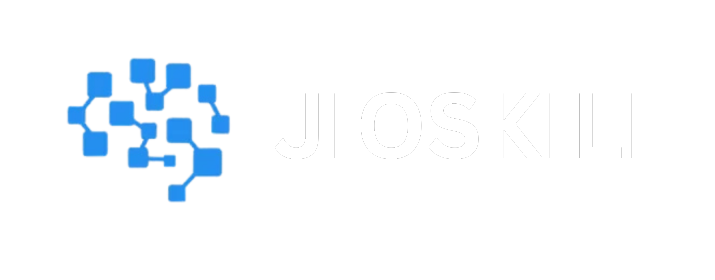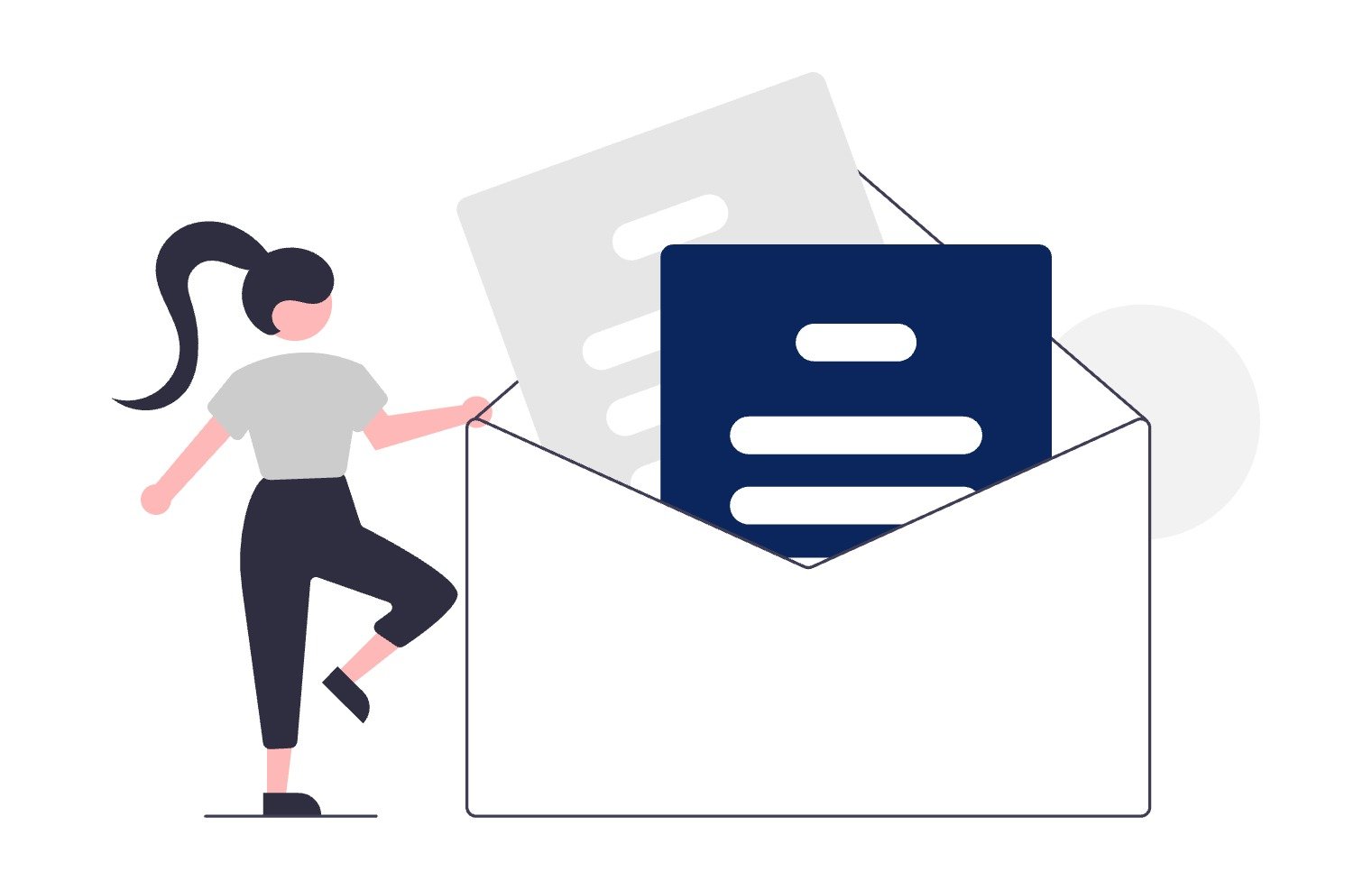Currently Empty: ₹0.00
What is Digital Marketing? A Complete Guide For 2025
Table of Contents
ToggleIntroduction to Digital Marketing
You’re here because you’ve heard about digital marketing. Maybe you’re a business owner, freelancer, student, or someone stuck in a 9-5 and looking to make a career shift. You see influencers talking about it. You see companies investing in it. And yet, you’re still wondering, what exactly is digital marketing, and how do you make it work in 2025?
Let’s break it down using real facts, case studies, and no fluff.
Problem: Traditional Marketing Is Losing Its Edge
Look through a newspaper. Watch television on cable. Pay attention to radio advertisements. It won’t take you long to understand that traditional marketing isn’t as effective as it once was.
Why Digital Marketing?
- With streaming services like Netflix and YouTube Premium, people are avoiding TV commercials.
- Online news sources are taking the role of newspapers.
- These days, cold calls are either immediately sent to voicemail or are marked as spam.
Global digital ad spending was $667 billion in 2024, and it is predicted to surpass $700 billion in 2025, according to Statista. In the meantime, print ad income keeps falling annually.
So, where is everyone’s attention going?
Online.
Problem: You’re Losing Leads and Money If You Ignore Digital Marketing
Let’s say you’re a small business owner selling eco-friendly water bottles. You’ve got great products, reasonable pricing, and a loyal customer base. But growth is flat.
You try newspaper ads, some responses. You sponsor a local event, some interest, but not enough sales.
Now, imagine your competitor starts running Instagram ads, optimizes their website for Google, launches an email campaign, and builds a YouTube channel explaining the product.
Guess what, Digital Marketing?
They start showing up in search results. They’re in your customers’ feed. They’re in their inbox. And you?
You’re invisible.
Digital marketing is not optional anymore. It’s survival.
- What is digital marketing
- Types of digital marketing
- Digital marketing funnel in 2025
- How to do Digital Marketing
- Benefits of Digital Marketing
- How to get started with steel marketing in 2025
- The future of digital marketing 2025
- What is online marketing?
Digital marketing: What is it?

Using internet platforms and technologies to advertise goods, services, or brands is known as digital marketing.
It consists of:
- Optimization of search engines (SEO)
- Marketing on social media (SMM)
- PPC (pay-per-click) advertising
- Marketing with content
- Email advertising
- Marketing using influencers
- Affiliate advertising
- Marketing with videos
- Internet analytics
- Mobile advertising
Reaching your audience where they are, on their phones, laptops, and smart devices, is the key.
The Essential Elements of 2025 Digital Marketing, which includes digital marketing
1. SEO, or search engine optimization
SEO raises your website’s Google ranking for pertinent keywords. SEO is at work when someone searches for “best digital watch under ₹2000” on Google and your website appears.
SEO is more than just keywords in 2025. It concerns:
- Experience of the user (UX)
- Page speed
- Reactivity on mobile devices
- Intent to search
- Google’s algorithm improvements are driven by AI
Case Study:
The blog content of an Indian e-commerce firm that sells home décor was optimized for long-tail keywords such as “affordable boho cushions India.” They saw a 120% increase in organic traffic and a 45% rise in monthly revenues over the course of eight months.
2. Advertising Pay-Per-Click (PPC)

You pay each time a user clicks on your advertisement while using PPC. Among them are
- Ads by Google (Search & Display)
- Meta ads on Instagram and Facebook
- YouTube Commercials
- LinkedIn Promotions
The majority of ad platforms currently incorporate AI, which explains why it will work in 2025. Auto-optimization across channels is made possible for advertisers by tools such as Google Performance Max.
Data: Wordstream reports that the average return on investment (ROI) for Google Ads in 2024 was 200%, or ₹2 for every ₹1 invested.
3. SMM, or social media marketing
In 2025, attention spans will still be dominated by social media.
- Instagram Reels
- YouTube Videos
- LinkedIn thought leadership
- Pinterest for finding new products
- WhatsApp for direct communication
Study of a Case:
With the help of Instagram influencer partnerships and a hashtag campaign, a fashion firm located in Kolkata made ₹12 lakhs in sales in just three months.
4. Marketing Content Digital Marketing
To draw in and hold on to an audience, produce worthwhile, pertinent material.
It could be:
- Blog entries
- Podcasts.
- E-books
- Informational graphics
- Online webinars
- Instructional videos
Helpful content is rewarded by Google, not keyword stuffing. And in 2025, the best-performing content is still that which responds to actual user queries.
As an illustration:
The blog of Neil Patel is a global marketing reference. For what reason? Millions of people visit it every month because it teaches, fixes issues, and fosters trust.
5. Email Promotion Digital Marketing
Email marketing, which is still one of the best ROI channels, enables you to communicate directly with your audience.
ROI in 2024: Campaign Monitor reports that the average return on investment was $42 for every $1 invested.
2025’s major trends:
- Personalized sequences produced by AI
- Interactive emails
- Gated lead magnets by email
6. Video Promotion
People would rather watch than read. Instagram Reels, TikTok, and YouTube are the most popular platforms.
Crucial statistics:
- Every month, 2.7 billion people use YouTube.
- When watching a video, viewers retain 95% of the message, compared to 10% when reading it.
Strategy: To reach a wider audience, turn your blog content into a video summary.
7. Influencer and Affiliate Marketing

Third-party promotion is essential to both models:
- Every sale generates a commission for affiliate marketing.
- Influencer marketing compensates for conversions, reach, or trust.
Influencers are still powerful, particularly micro-influencers with fewer than 50,000 followers, who frequently have greater engagement rates.
According to Influencer Marketing Hub, 49% of buyers rely on recommendations from influencers before making a purchase.
2025 Digital Marketing Funnel

Consider it a journey:
- Awareness: They find you via advertisements, social media, or SEO.
- Interest: They read your blog, follow you, or visit your website.
Take into account that they download a guide or sign up for your email list.
- Conversion: They make a purchase, register, or get in touch.
- Loyalty: You keep them around with deals, emails, and material.
Every step has the appropriate tools:
Being conscious:
- Focus: Draw attention and increase awareness
- Tools: PPC advertising, social media, and SEO
Interest :
- Goal: Involve and inform the audience
- Tools: Lead magnets, videos, and blogs
Considering:
- Focus: Develop trust and nurture leaders
- Tools: Email sequences and retargeting advertisements
Conversion:
- Priority: Motivate action and close the deal
- Tools: Checkout optimization and landing pages
Trustworthiness:
- Focus: Keep clients and promote recurring business
- Tools: email marketing, loyalty programs, and CRM systems
How To Get Started With Digital Marketing in 2025
Step 1: Recognize Your Viewers
- Make use of free resources such as
- Meta Audience Insights
- Google Analytics 4.
- AnswerThePublic
- Reddit & Quora
Find out
- What issues are they dealing with?
- The platforms that they utilize
- What they watch and read
Step 2: Select the Channels
Avoid trying to do too much at once. Wherever your audience is, start there.
- B2C item? Google Shopping + YouTube + Instagram
- B2B service Creator/coach of LinkedIn + SEO + Email
- Podcast Email List + Instagram
Step 3: Produce Useful Content
Don’t try to sell; try to help.
For instance, if you sell exercise equipment, don’t only share pictures of your products. Distribute free guidelines, transformation tales, fitness videos, and advice.
Step 4: Monitor and Assess Utilization:
Email marketing dashboards (such as Mailchimp or ConvertKit)
- Google Analytics Meta
- Ads Manager SEMrush
- Ahrefs for SEO
Track:
- Sources of traffic
- Rate of conversion
- The price per lead
Case Study: Local Bakery That Turned Digital
A bakery in Pune, India, saw sales drop during COVID. They launched an Instagram page, started sharing behind-the-scenes stories, ran Facebook ads targeting a 5km radius, and listed on Google My Business.
Results:
- Website visits increased by 180%.
- Online orders grew by 70% in 3 months.
- They built a 2,000-subscriber email list offering birthday coupons.
All with a digital budget of ₹20,000 per month.
The Future of Digital Marketing (2025 and Beyond)

Here’s what’s shaping the industry:
- AI-Powered Tools: AI is automating copywriting, ad optimization, and email segmentation.
- Voice Search: Over 50% of searches are voice-based; optimize for questions and natural phrases.
- Zero-Click Results: Google often answers questions directly on the SERP. Focus on featured snippets.
- Privacy Changes: Cookies are going away. Build owned channels like email and SMS lists.
- Interactive Content: Quizzes, polls, and calculators keep people engaged longer.
Benefits of Digital Marketing Backed by Real Results
Let’s examine the advantages of digital marketing in the actual world. There is more than just theory; there are results and instances that make sense, whether you are just starting out or trying to scale.
1. Convey a Local and Worldwide Audience simultaneously
The audience for your message can be anywhere in the world or just across the street thanks to digital marketing.
Case Study: To target Indian students in the Middle East who were getting ready for the NEET, an online tutoring business based in Chennai employed YouTube ads. With a monthly expenditure of ₹80,000, they were able to reach over 5 lakh viewers and, in just three months, sign up for over 700 additional courses.
- Why It Matters Your precise audience can be geo-targeted.
- No more relying on word-of-mouth or printing posters.
2. Affordable for All Budgets
Digital marketing has flexibility. It grows with your objectives, so start with ₹500 or ₹5 lakhs.
A small bakery in Jaipur began using Instagram Story advertisements to advertise their weekend combo deal. Of their ₹2,000 budget, 75 orders were placed in 48 hours. With an average order value of ₹250, the total income was ₹18,750.
- The reason is because you can scale, modify, or pause at any time.
- By using A/B testing, you can determine which strategy is more profitable.
- As opposed to traditional advertisements, you are not bound by long-term contracts.
3. Decisions Driven by Data
Digital marketing, as opposed to hoardings or flyers, offers complete visibility as to:
- First impressions
- A click
- Leads in
- Buyings
- ROI
Example: A B2B software business in Ahmedabad reached HR managers via LinkedIn ads. After tracking lead sources through integration with Google Analytics and HubSpot, they discovered that LinkedIn advertisements had a lead-to-close ratio that was 2.5 times higher than email marketing.
The Reason It Matters
- Don’t guess what’s working anymore.
- Track the content that generates revenue or leads.
- Enhance based on actual data, not conjecture.
4. Aim for Particular Client Segments
You can segregate using digital platforms according to:
- The age
- Place
- Passions
- Buying patterns
- Usage of devices
A D2C home décor company conducted distinct Facebook advertising targeting women and men in the 30- to 45-year-old age range. Men’s commercials focused on lighting devices, while women’s ads included equipment for managing the home. CTR rose 47% and CPA decreased 28% with the segmented strategy.
- The reason is that no impressions are wasted on the incorrect audience.
- Messages can be tailored to each group.
- lower ad expenditure and higher conversion rates
5. Increase Conversion Rates
A specific volume of traffic is one thing. Converting that traffic into leads or customers is the secret to digital marketing success.
Case Study: An Noida-based legal services portal improved a Google Ads landing page. In addition to testing two headlines, they incorporated testimonials and a one-click call option. As a consequence, their landing page conversion rate rose from 2.3% to 6.9% and their lead flow tripled with the same budget.
Why It Matters:
- You are in charge of the user journey (ad → landing page → lead).
- Small changes can have a big impact.
- Performance improves over time, not all at once.
6. Round-the-clock Promotion Even when you’re asleep
On the weekends, vacations, or even when you’re sleeping, your campaigns can run.
Case Study: Email automations that were triggered by blog visits and downloads were implemented by an eBook publisher in Hyderabad. They operated around the clock. Their autoresponder generated consistent daily sales by converting 3.5% of visitors into purchases while the crew was asleep.
Why It Matters:
- Configure it once, then maximize it.
- Even if you’re not online, your firm remains operational.
- Excellent for small teams and solopreneurs with limited time.
7. Fair Treatment of Small Businesses
To compete, you don’t need a big budget.
Case Study: A freelance graphic designer in Kerala set up a YouTube channel to offer design guidance. After six months of consistent uploads, she started to receive leads from the United States, the United Kingdom, and the United Arab Emirates—all without investing any funds in advertising.
Why It Matters:
- Starting with organic strategies like SEO and YouTube doesn’t cost anything.
- You may build an audience around your specialty.
- Having a large budget is not necessary to create an impact.
What is digital marketing?
Description: Most businesses are stuck with antiquated marketing strategies, which makes it difficult for them to draw in clients.
Problem: Conventional newspaper or banner ads are difficult to measure and could not even reach the intended target.
Solution: Digital marketing promotes goods and services through online platforms like websites, search engines, social media, email, and sponsored advertisements. You have authority over who receives your message, how much you spend, and the outcomes.
Which Digital Marketing types are the most common?
Description: Companies frequently experiment with one channel before giving up too soon when it doesn’t work.
Problem: If you don’t know how to link the entire approach, using Instagram or just one blog won’t work.
Solution:
- Digital marketing comes in a variety of forms.
- SEO (Google visibility)
- Building a network and increasing visitors through social media marketing
- PPC advertisements (pay to quickly contact customers)
- Email marketing (conversion and retention)
- Content marketing (naturally generates leads)
- Influencer and affiliate marketing (using other people’s audiences)
- Mobile marketing (WhatsApp, SMS, and push notifications)
- Every kind has a function. For instance, an EdTech business increased course sign-ups by 42% by using YouTube SEO and content marketing to get 12,000 organic views per month.
What makes Digital Marketing superior to conventional marketing?
Issue: Performance tracking is not available with traditional techniques like flyers or hoardings.
Problem: It’s impossible to gauge the number of people who saw a hoarding. If a printed advertisement fails, it cannot be changed.
- Digital marketing is the answer.
- Everything can be tracked, including clicks, leads, and conversions.
- A modest budget is a good place to start.
- Depending on the results, you can scale, halt, or test.
- For instance, a Jaipur bakery spent ₹2,000 on Instagram Story advertisements. There was complete tracking of which ad generated which transaction, and it led to 75 orders totaling ₹18,750.
Does Digital Marketing Need a Large Budget for Small Businesses?
Issue: A lot of small business owners believe that digital marketing is just for large corporations.
Problem: They lose out on scalable growth and wind up depending only on foot traffic or referrals.
Solution:
- Small enterprises can begin with the following, even with a ₹500–₹1,000 budget:
- Free Google Business Profile
- Promotions on WhatsApp
- Posts on Instagram that are natural
- Local search engine optimization
Example: Without spending money on advertisements, a Pune-based tailor generated 18 new leads every week by using local SEO and WhatsApp status updates.
Is It Good to Work in Digital Marketing in 2025?
Description: In pursuit of stable jobs, many people ignore growing fields.
Problem: Traditional jobs are dwindling in number, but digital marketing jobs are expanding across industries in response.
- According to NASSCOM, India would need 1.5 million digital marketers by 2026.
- It is feasible to work remotely.
- Options for agencies and freelancers are expanding.
- For instance, a Delhi commerce graduate who completed a three-month course in digital marketing was hired as a rookie at a U.S.-based e-commerce company, earning ₹35,000 a month.
What is a digital product?
A digital product is any item you can create once and sell repeatedly online. It exists in a digital format (like a file, software, or course) and is delivered electronically, with no physical shipping involved.
Here are some common examples:
- Ebooks (e.g., a fitness guide)
- Online courses (e.g., learning Excel or Canva)
- Design templates (for Instagram, resumes, etc.)
- Printable planners or worksheets
- Music beats, sound effects, and stock photos
- Code snippets or website themes
- Digital art or NFTs
- Subscription-based tools or newsletters
What are the best ways to learn digital marketing?
- Google Digital Marketing Course (Free): Available on Google Digital Garage.
- Online Marketing Courses (Affordable): Udemy, Coursera, Skillshare.
- Website Marketing Courses: Focus on building, ranking, and optimizing your site.
- Classes on Social Media Marketing: Learn how to grow and monetize a brand on Instagram, Facebook, and YouTube.
- Internet Marketing Classes: Check local institutes or training centers.
Marketing an Online Course: Learn funnels, lead magnets, and paid ad strategies to sell your own course.







